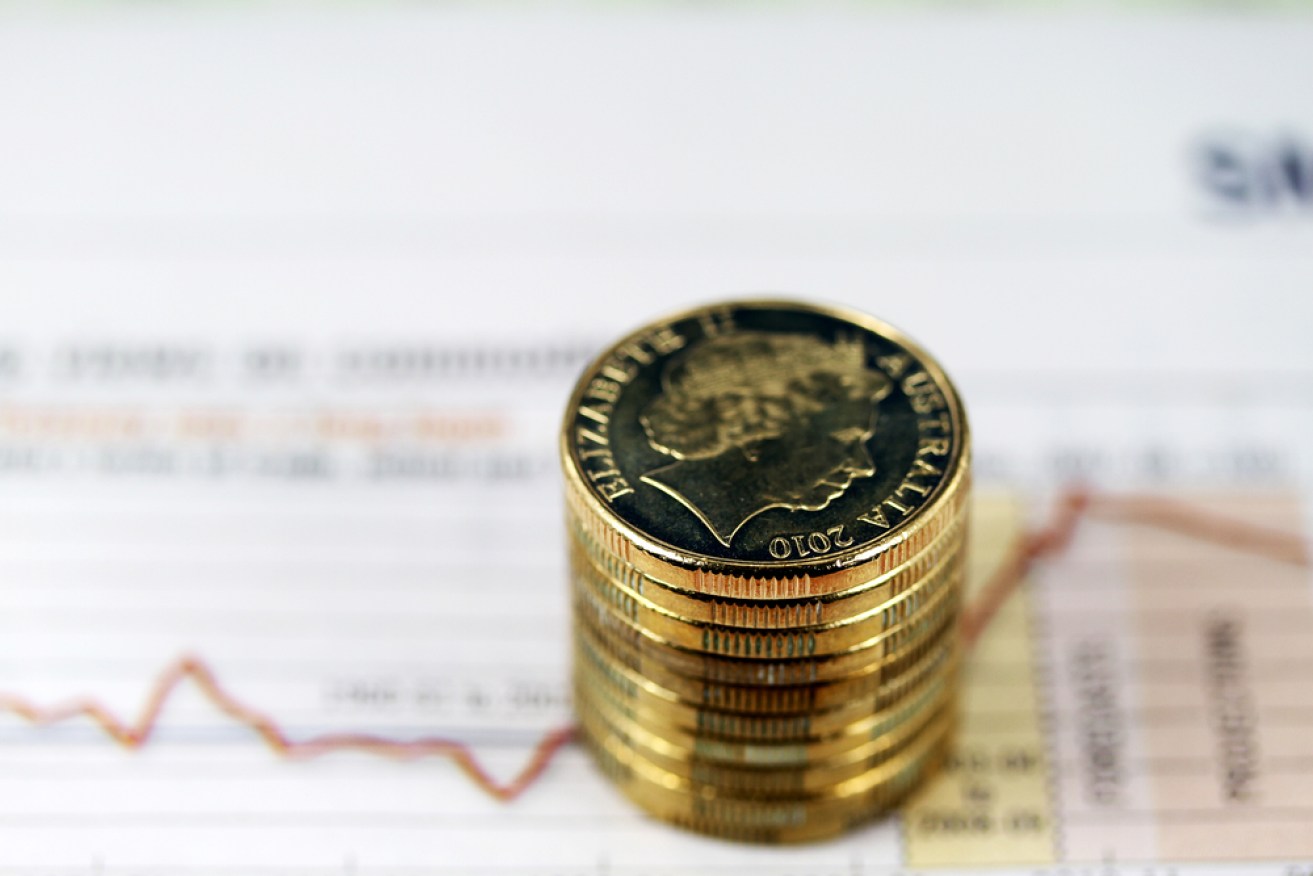People cheering for a falling Aussie dollar


Shutterstock
For the average Aussie, the high Australian dollar has meant cheaper holidays overseas, less expensive online shopping and more affordable plasma screen TVs.
Sounds pretty good, doesn’t it? Not everyone thinks so.
The Reserve Bank of Australia (RBA) has been worried about an “uncomfortably high” Australian dollar being a drag on growth, and wants it to fall even further.
• Is the Australian economy really that bad? We explain it
• Who pays? Australia’s biggest tax dodgers
RBA governor Glenn Stevens has been trying to “jawbone” the dollar down, but until recently it has remained stubbornly high. In September the Aussie dollar fell to a low of 86.84 US cents, down from 93 US cents earlier that month.
The falling dollar is already being touted as a saviour for Qantas, with its chief Alan Joyce saying about 80 US cents would be a “sweet spot” for the troubled airline to make its cost base more competitive.
A high dollar has decimated Australian manufacturing, stagnated pay rises, hit domestic tourism and made it harder for exporters to sell their products overseas.
The New Daily looks at why so many are calling for the Australian dollar to fall, and what a cheaper dollar would mean for you.
Why is the dollar high? And why is it falling?
Up: After trading about 93 US cents through the main part of the year, the Aussie is currently worth around 88 US cents, but the RBA would like to see it fall to around 80 to 85 cents.
Western Union currency strategist Steven Dooley says while demand for Australian resources like iron ore strengthened the Australian dollar, it’s actually more to do with how weak the American dollar has been after the global financial crisis.
“As the US dollar fell, that made the Australian dollar rise,” Mr Dooley says.
Low interest rates overseas in both America and Europe have also made Australia more attractive for investors, driving up the demand for the Aussie dollar, and it’s price.
“That’s the main reason the Australian dollar has been so high, because US interest rates were near zero,” he says.
Down: As the American economy recovers and the Federal Reserve is expected to increase US interest rates, the dollar is likely to go down.
A declining demand for Australian resources from countries like China is also having an effect.
Mr Dooley says that the falling dollar is simply the currency market moving back into a more “normalised state”, with the AUD traditionally buying around 75 US cents.
Why a high Aussie dollar hurts
While a high dollar has been a boon for importers, Australians shopping online and overseas travel, export-based businesses in Australia are struggling against cheaper overseas competition.
“People lose their jobs. Look at what’s happening at Holden or Ford or Toyota – that’s a direct consequence of the high Australian dollar,” Mr Dooley says.
Deakin University finance professor Monica Keneley says that industries like mining and agriculture are also hurting.
“Although we’re producing a lot of minerals that the world wants, we’re probably less competitive than other countries that may be able to produce it cheaper,” Ms Keneley says.
Companies are also relocating their headquarters and operations to cheaper bases overseas, says Mr Dooley. This means a higher unemployment rate and less job prospects for the average Australian.
Why we’ll all benefit from a lower dollar
If the Australian dollar is worth less overseas, Australians are more likely to turn to local products, says Ms Keneley. With more Aussies spending at home, that means more jobs and more government revenue.
“As the economy grows, people would earn more and pay more tax, so issues with the government deficit would be alleviated a bit,” she says.
Exports such as agriculture and seafood would also improve, employing more people in these sectors. While it would cost more for Australians to travel overseas, it means more international tourists would come here.
Mr Dooley warns, however, that a large fall in the dollar could see the price of imported consumer goods like TVs surge, shocking people out of spending in these areas and potentially hurting consumer confidence.
“If the Aussie falls lower, then all of a sudden retail just collapses … a low dollar helps some areas, but it’s going to be pretty negative for other areas,” he says.
What happens next?
It will take time for the economy to recover from the high dollar, says Mr Dooley, because the Australian dollar has been in the high range of more than 80 US cents since around 2007.
“Obviously organisations that have relocated overseas are probably never coming back, but I think that certainly over the next 12 months, markets will move back to a more normalised state,” he says.
For the average Australian, that means that online shopping and travel overseas will again become more expensive.
“Hopefully everyone’s jobs might be a little bit safer, but the downside is that you might want to buy that Louis Vuitton handbag now rather than in two years time,” Mr Dooley says.










